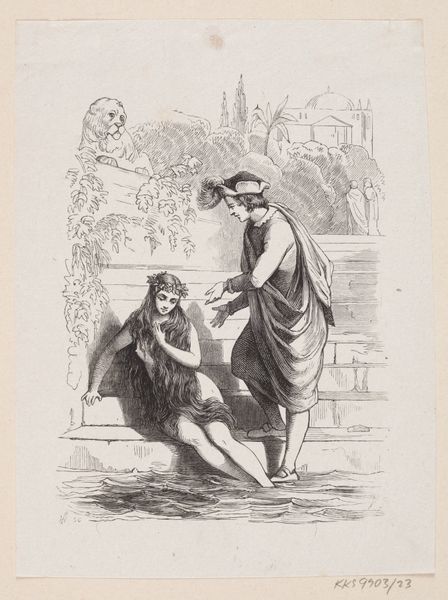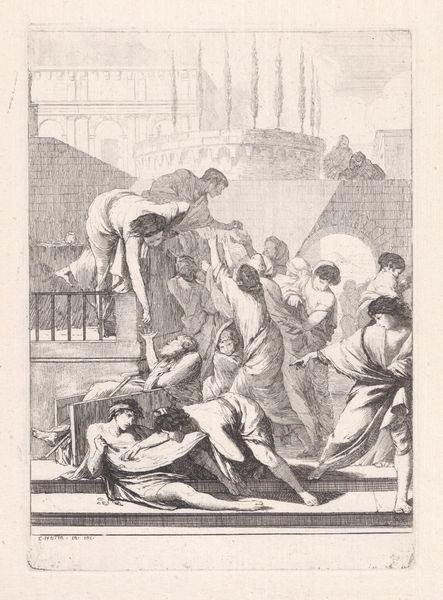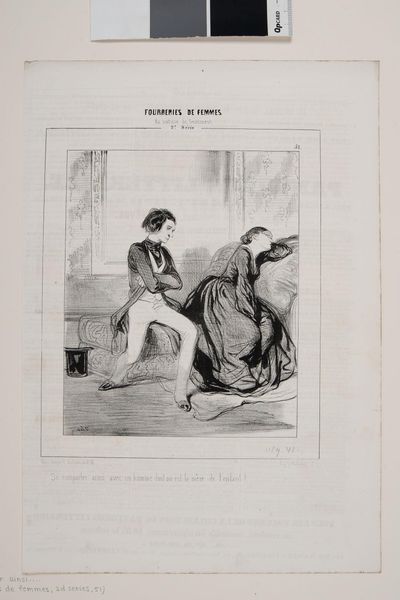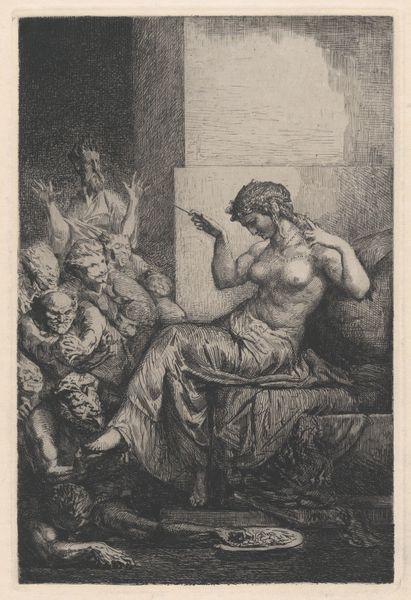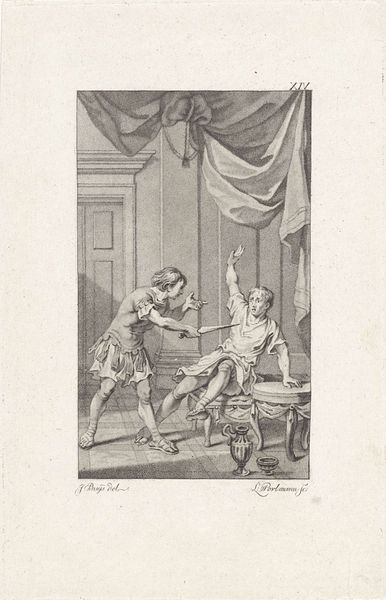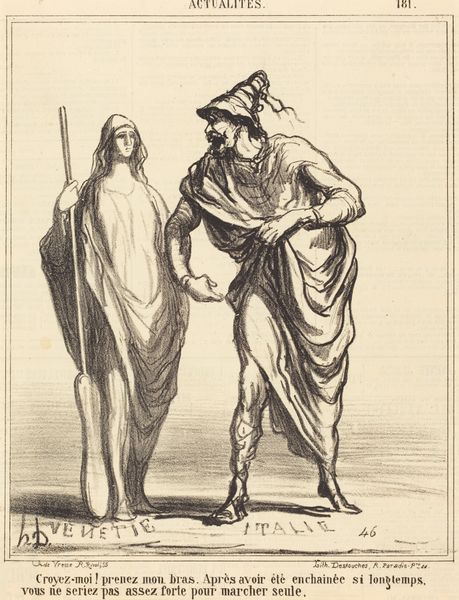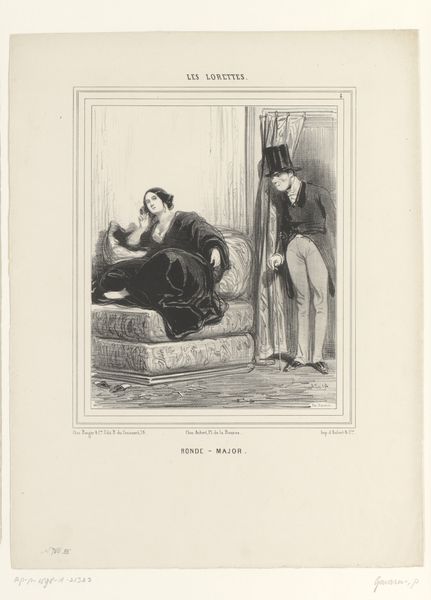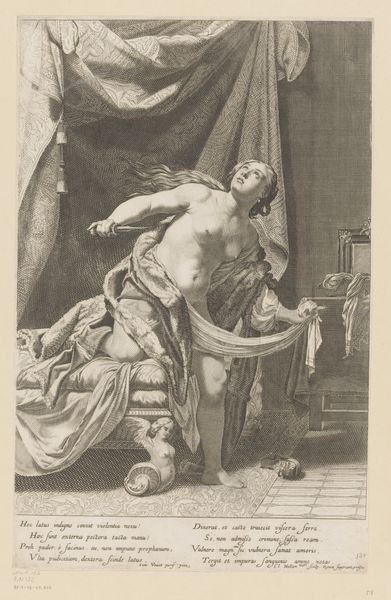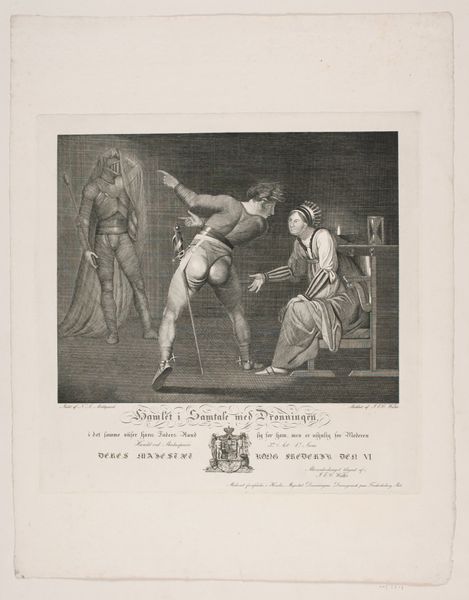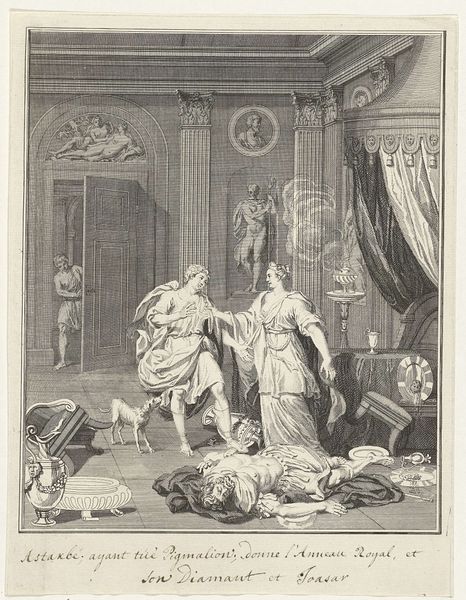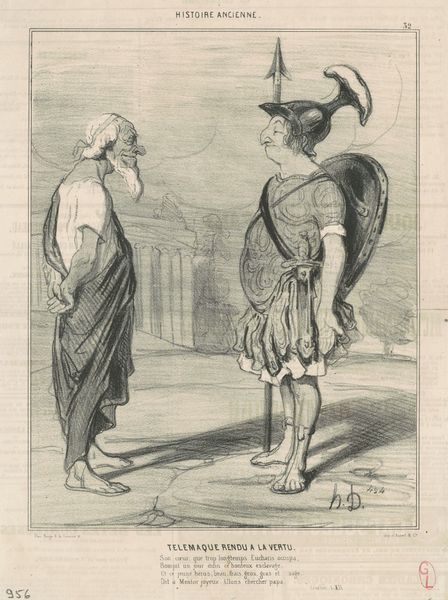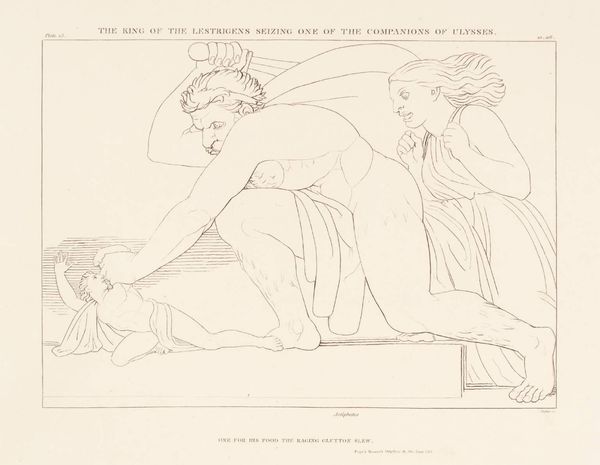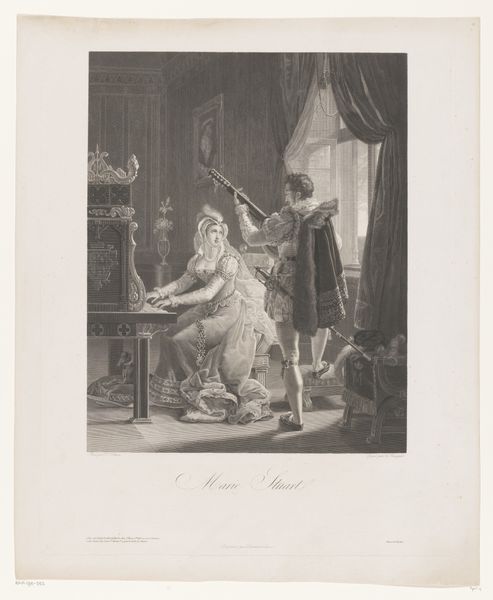
drawing, lithograph, print
#
portrait
#
drawing
#
lithograph
# print
#
caricature
#
figuration
#
romanticism
#
line
#
genre-painting
#
history-painting
#
academic-art
#
realism
Copyright: National Gallery of Art: CC0 1.0
Editor: We're looking at Honoré Daumier's lithograph, "Socrate chez Aspasie," from around the 19th century. There's a chaotic energy to the image—Socrates looks like he’s busting a move while Aspasia plays the violin. It's… unexpected, to say the least. What do you see in it? Curator: Oh, Daumier! He captures life’s little absurdities so beautifully. It’s not just Socrates dancing; it’s a commentary, a wry look at historical figures behaving…less than dignified. Do you see how Daumier uses line—the frenetic energy—to deflate the pomposity of academic art? The Romanticism he’s mocking clashes magnificently. It's as if he’s asking: what if history was less grand narrative and more drunken karaoke? Editor: So, it’s less about historical accuracy and more about poking fun at stuffy conventions? The 'drunken karaoke' makes so much sense. I love it! Curator: Exactly! It's Daumier being Daumier—a revolutionary with a pencil. Consider this piece in relation to the political climate of the time – Daumier frequently used satire to make serious points. Doesn't that make you think differently about what's happening on the surface? Editor: Definitely. I had just focused on the comedy, I had not paused to appreciate the sharp social critique. I can never look at a Daumier print in the same way now. Curator: And hopefully that helps make the viewing experience much richer and satisfying, even more pleasurably anarchistic.
Comments
No comments
Be the first to comment and join the conversation on the ultimate creative platform.
